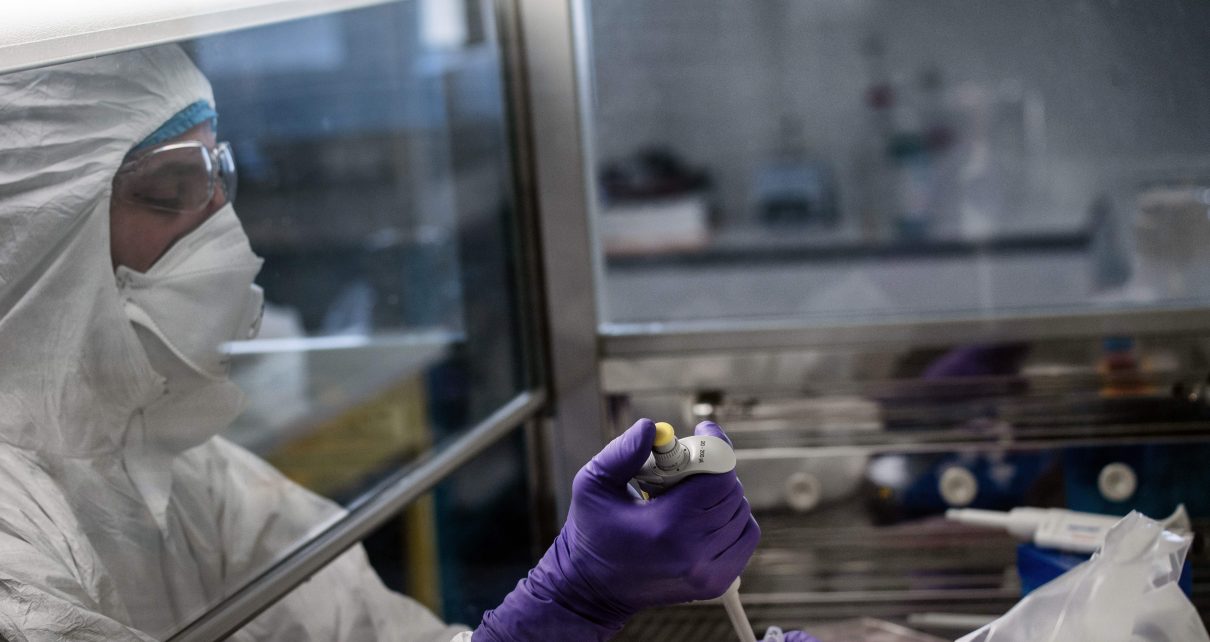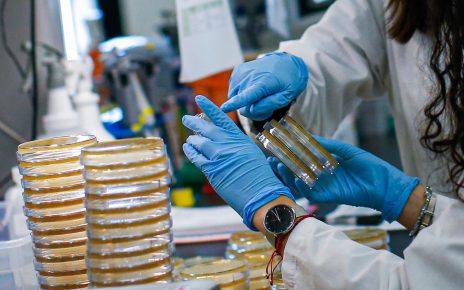In the weeks to come, we’re about to relearn that old truth: necessity is the mother of invention. Researchers will work around-the-clock because of the world’s need for a cure for COVID-19. But it’s worth keeping a corollary thought in all of our minds: necessity may be the mother of invention, but curiosity and imagination are the parents of discovery.
The COVID-19 pandemic has made it abundantly clear that the world now needs America to be curious—specifically, to continue to push the frontiers of discovery. We will, once again, need to marshal our curiosity to solve big, intractable problems. Though we face a current crisis, this sort of thing is in America’s DNA: we have always been able to commit ourselves to human endeavors in science and research that bring out our country’s best—and push humanity forward. We’re called to turn the page on America’s recent past and rediscover our powers of discovery.
Our country has always marshaled the one renewable resource we have to better the human condition – our brainpower. In our most hopeful days, we have had a deep commitment to research and discovery— It was President John F. Kennedy who told America that discovery was a choice—not a burden. He declared, “We choose to go to the moon in this decade and do the other things, not because they are easy, but because they are hard, because that goal will serve to organize and measure the best of our energies and skills, because that challenge is one that we are willing to accept, one we are unwilling to postpone, and one which we intend to win, and the others, too.”
At the height of the space race, America spent almost 2 percent of its GDP on federally funded research and development (R&D). In recent years, that number was orders of magnitude lower, standing at an anemic 0.6 percent of GDP today and the result is unknowable missed opportunities. In the wake of COVID-19, it is imperative that American invest in discovery and basic scientific research—with an eye not just to preparing for future pandemics, but also to solving the most pressing issues of our time, including the climate crisis, extreme weather and antimicrobial resistance, among others.
That’s why I am calling for a return to the age of discovery. The Discovery Project is a mobilization of public resources to boost research back to Apollo-era levels—a legislative initiative calling for space race–scale mobilization and investment to discover, cure, alleviate and better the greatest challenges and opportunities facing humanity.
Specifically, this proposal calls for:
- A $200 billion increase in funding for existing research agencies like the NIH, NOAA and NSF, along with public universities;
- $100 billion for the development of geographically distributed “Discovery Hubs”;
- Open-source, open-access research as industrial policy—like the Erie Canal for the 21st century, we should view this as a public works project that the entire economy can benefit from.
This initiative, unlike a moonshot, is not focused on a single goal. Rather it is an exercise of imagination and curiosity to solve the greatest issues of our time while massively boosting America across almost every sector.
PUBLIC RESEARCH AT ITS BEST
Why publicly-funded research? Because it solves for a basic market failure: companies don’t invest in blue-sky projects that don’t have a guaranteed return. Without a clear path to profit, our country’s private sector companies invest in the sure thing—and underinvest in what could be. And while, America’s companies are investing at record levels, its public sector sits at near century lows. But those companies aren’t going to invest in projects and areas that have too much uncertainty or that won’t pay off for shareholders.
Consider a shining example of how public research can step in where the private sector cannot: the Human Genome Project. In the 1980s and early 1990s, the government planned and launched a plan to sequence the human genome. The funding was supposed to last 15 years at a cost of some $3 billion in taxpayer funds. The result? The genome was sequence two years ahead of schedule. And genomics-related economic activity totaled nearly $1 trillion from 1988 to 2012; taking an additional $8.5 billion in relevant federal spending into account, this amounted to a whopping 65:1 return on the federal dollar.
But timelines and cost are just one measure. What the Human Genome Project unleashed was path-breaking, life-saving research on everything from cancer therapies to discovering the genetic roots of diseases. We have a better handle on genetic predisposition to an array of illnesses, including the most pernicious of our time—cancer, Alzheimer’s, diabetes, cystic fibrosis and many others.
STEPPING UP OUR COMMITMENT
Lives will be saved because of this basic investment in public research. And yet, for all the success of this project, public basic research as a share of GDP has consistently fallen since its height in the 1960s. Here’s one astonishing metric: today, only 22 percent of NIH grant applications are funded. In that remaining 78 percent are surely one or many great ideas that need public backing.
That’s why we must invest $200 billion dollars to increase funding for the federal research agencies like the NIH and the National Science Foundation (NSF) and provide states with grants to create the following: a public option for broadband; makerspaces and hackerspaces; advanced technological education (ATE) centers.
This investment ensures that everyone, regardless of the circumstances of their birth or socioeconomic status, has access to the necessary infrastructure to become an innovator. They can be properly equipped to succeed in the high-tech, knowledge-based economy. It also ensures federal research agencies are adequately funded to carry out the necessary research to make the United States, once again, the global leader in breakthrough discovery and problem solving.
In addition to the $200 billion dollars allocated to various federal research agencies, another $100 billion dollars ought to be issued in grants to create research “discovery hubs” across the United States. Each discovery hub will be focused on solving a big issue such as climate change, climate adaptation, pandemic preparedness, crop failure, infrastructure modernization, and more. In the same way the Human Genome Project focused the attention of scientists and researchers on one challenge, so the discovery hubs will target all of their intellectual firepower on a single issue or problem.
THE ECONOMIC ARGUMENT
Economists Jonathan Gruber and Simon Johnson point out that even a $100 billion increase in public R&D spending would boost productivity growth by 30 percent and create four million new jobs a year. Further, since World War II, 80 percent of the increase in U.S. living standards can be attributed to technological advancements. In other words, we can increase productivity, create jobs, and improve living standards—all with a single step. And all of that is besides of any breakthroughs we create or discoveries we find’ it’s just the benefit we get in the short-run.
As with an effort at pure discovery, the long-term gains are unknown, unknowable—and potentially enormous. Consider the space program, once again. NASA doesn’t brag about this achievement—after all, it’s hard to top landing on the moon—but it was a NASA grant given to a lab that created a microalgae-based space food. That development yielded what many new parents use every day: baby formula.
In the same spirit, NASA’s Jet Propulsion Laboratory needed to find a way to make cameras smaller for space travel. They developed a camera-on-a-chip sensor, known as the CMOS. If you can take a selfie today, you have to thank the publicly funded researchers at the Jet Propulsion Laboratory: that CMOS sensor is one of the key components to every single smartphone camera in the world.
Scientific progress is the key to treating the next pandemic, exploring the next horizon and creating the next pathbreaking technology. But as a country, we’ve underinvested in that progress, and if the COVID-19 scare should remind us of anything, it’s how much we can do when we put our public resources behind scientific research and discovery. It’s time to put America’s energy and curiosity against existential issues like climate change, pandemics, biodiversity loss and to find the unknown unknowns that can change the course of humanity. It’s time for Americans to, as President Kennedy did, choose to be curious and to be explorers.




